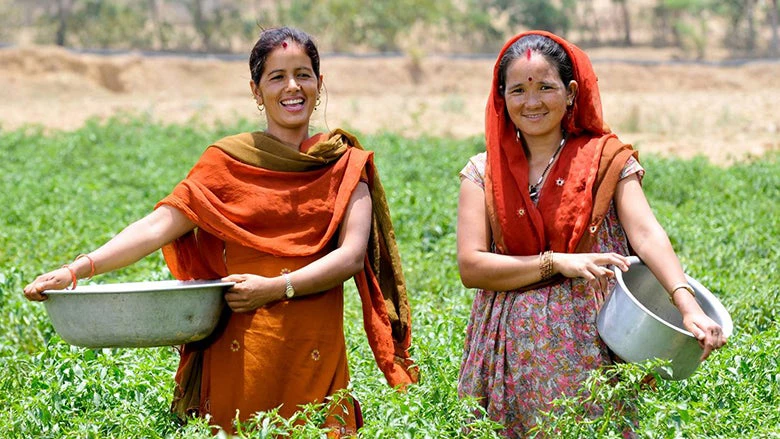
Farmers, like these women in Nepal, are eager to help the agriculture sector become part of the solution to climate change. / Photo: Neil Palmer/CIAT
It’s widely recognized that agriculture can be part of the solution to climate change. The worldwide agriculture sector currently accounts for between 19 percent and 29 percent of total greenhouse gas (GHG) emissions. A combination of policies, investments and targeted action is critical to achieve a low-carbon and climate-resilient agriculture sector.
But the question arises: Where will the money to fund this transition come from? Can farmers alone finance the productivity and climate change adaptation and mitigation changes that are needed?
The vast majority of climate finance has traditionally flowed to other sectors, accentuating even more the shortfall in finance for agriculture.
Due to perceptions of low profitability, along with high actual and perceived risks, lenders often severely limit the flows of finance directed to smallholder farmers and small and medium-sized enterprises (SMEs) in agriculture. Without access to capital, farmers cannot invest in raising their productivity and incomes, becoming more resilient to climate change and mitigating their farms’ negative impact on climate.
But untapped sources of capital exist for making agriculture more climate-smart — namely, in climate finance. A recent World Bank discussion paper, Making Climate Finance Work in Agriculture, explores ways to use climate finance to dramatically increase the flows of capital directed to smallholder farmers and agricultural SMEs, aiming to deliver positive climate outcomes.
To bridge the financing gap, climate finance must be used as a catalyst to unlock and leverage additional sources of capital – from both public and private sources – that can be directed toward climate-smart investments in agriculture. This can be done in a variety of ways. One is by enhancing new partnerships and collaborations to leverage resources, expertise and the capacities of different stakeholders. Designing and piloting new investment vehicles to attract additional capital is another option. In addition, bundling a range of financial instruments to heighten their effectiveness and provide more comprehensive solutions could also prove effective.
However, additional capital alone may not be sufficient. Therefore, climate finance should be used to strengthen the links between financial institutions and smallholder famers and SMEs, by addressing some of the key financial-sector constraints on agriculture. Potential avenues to do this include using climate finance to develop and improve a finance-enabling environment for agriculture, and supporting financial institutions in developing their risk-management mechanisms and reducing transaction costs. Such interventions could help financial institutions enhance their capacity to design and provide tailored financial instruments and develop new delivery channels that meet the needs of smallholder farmers and SMEs engaged in climate- smart practices.
Realistically, addressing such constraints will require significantly strengthening the capacities of all the stakeholders involved. This is why climate finance should also finance technical assistance to financial institutions. Ideally, this would help them build their capacity to develop financial products and services customized to the agriculture sector and to borrowers — and to minimize risk as a result.
Incentives will be important in making this work. One idea: Financial and technical support could be contingent on achieving specific climate-smart outcomes, so that financial institutions and smallholder farmers and SMEs have an additional incentive to develop a more productive, climate-resilient and efficient agriculture sector. With the right mix of incentives, actions and goals, we can find the funding and build the financial mechanisms to move the climate-smart agenda forward.


Join the Conversation